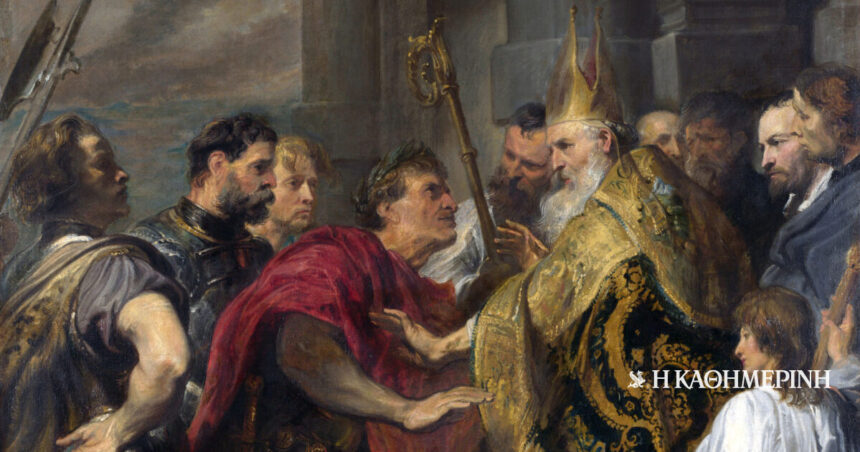After the death of Jovian in February 364, Valentinian ascended the imperial throne. For the best administration of the vast empire, Valentinian appointed his brother Valis as a co -emperor, giving him the rule of the eastern part. The two of them undertook a very difficult task since Roman Empire It was attacked and raids by barbaric tribes on its northern borders. Specifically, the Saxons raided the British, the Alames in the Rhine and the Sarmats in Pannonia.
In the territories north of the Danube, the Visigoths were settled since the time of Constantine the Great. Their relationships with Constantinople They were described for many years as friendly. During the Julian Authority (361-363), however, they began to show their aggressive moods again, organizing raids on the Balkans. In 369, Valis carried out a series of operations to combat the threat of the Visigoths. When they were overthrown in the battlefields, they accepted the Emperor’s terms: they would not enter Roman territory again, resigned from any claim for financial sponsorship and agreed to have only two points along the Danube for trade.
The Visigoths, under the pressure of the Huns, struck against Roman power.
However, Walis did not insist on the radical crash of the Goths, which required the conduct of perennial and costly businesses. Valis had to take into account the possibility of a new round of clashes with the Persians on the eastern border.
As soon as he arranged his affairs on the Danube border in 370, Valis went to Antioch, one of the major centers of Roman power on the eastern border. The new clashes that broke out in 371 did not have the size of the older ones, and the two sides were drawn to a fruitless dialogue to find a commonly accepted solution of peace. Valis, however, was alarmed when he was informed of developments in the Balkans: the Visigoths, who had been installed – after consulting with the Roman side – south of the Danube under the pressure of the Huns, had struck the Roman power against the Roman power. of local governors.
At the hearing of these news, Valis returned rapidly to the Front of Thrace, which the rebels had looted. In a battle held in a village in Adrianople in August 378, Valis lost his life. The Roman army suffered a panic and the eastern part of the Empire lost one of its most worthy rulers, according to Ammian Marcelino.
Theodosius realized that the constant war conflict with the Goths was fruitless.
Valdinian was succeeded by the throne as a co -emperor of Valentinianos Theodosius I, on January 19, 379. Theodosius realized that the constant war conflict with the Goths was fruitless. Another solution had to be found for the peaceful coexistence of the Romans with them. The two sides have compiled peace, according to which the Ostrogoths allowed them to settle in Pannonia and the Visigoths in Kato Moisia, receiving autonomy and tax flaw. In return they had to contribute to the defense of the empire as fours.
Although several 20th -century researchers criticized Theodosius I’s choice to conclude such an agreement with the Goths, saying that it was a “peaceful enslavement” of the Romans, contemporary writers realized the emperor’s policy differently. They saw in his actions on the one hand the effort to make the moral and material improvement of the lives of the barbarians and the benefit of the empire from the conversion of the inexorable invaders to peaceful farmers.
Column: Myrto Katsigera, Vassilis Minakakis, Antigoni-Despina Poumenidou, Athanasios Syroplakis




